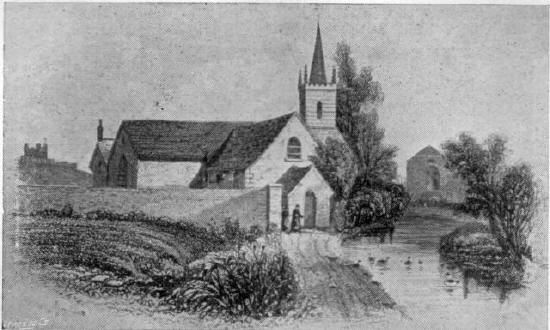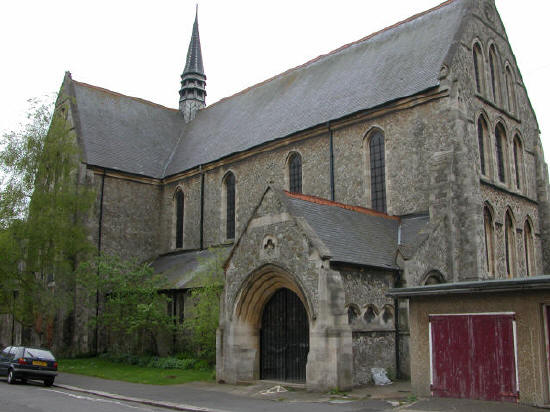| Back ... | SS Peter & Paul, Charlton | ||
|
|
|||
The picture above shows Charlton
Church as it appeared in 1827, on the bank of the river Dour.
|
|||
|
|
|||
|
|||
| Unfortunately it has not yet been possible to
gain entry to the church to get pictures of the interior as, like most
churches these days, it is kept locked when not in use for services. |
|||
|
|
|||
Some Charlton RectorsFrom 1291, when Simon of St. Albans was rector, until 1889, when the Rev.
S. F. Green was inducted, there were some 39 incumbents of this parish.
Below are some of those for whom information is available. |
|||
| John Goldsmith | 1447 | also rector of St John the Baptist, a parish church under the roof of St Martin-le-Grand | |
| John Clark | 1514-1541 | also Master of the Maison Dieu, obtained a grant from Henry VII by which the first harbour works were carried out at Archcliffe Point | |
| John Burnell | 1541-1582 | one of the brethren of the Maison Dieu who, on the closing of that house, received a pension for life of £6.15s.4d. a year. Became rector of Charlton seven years after the closure of the Maison Dieu. | |
| William Watts | 1587-1603 | also rector of St James' from 1569-1606, when he resigned | |
| William Brewer | 1690-1700 | previously rector of St James' and vicar of Hougham | |
| David Campredon | 1700-1730 | became minister of the French Huguenot church in Dover in 1692 and rector of Charlton in January 1700, retaining the pastorate of the French church until he resigned in 1709, when he was presented to the joint livings of Shepherdswell and Coldred, which he held, with Charlton, until his death in 1730 | |
| Richard Monins | 1758-1770 | the Monins family were patrons of the living, many of them being buried in the church. Richard died in Canterbury, leaving a fortune of £30,000 to his brother, a lieutenant in the army, and his un-married sister. John rebuilt the church in 1827 | |
| John Monins | 1811-1829 | ||
| Frederick Augustus Glover | 1837-1845 | wrote several tracts and pamphlets on the improvement of Dover harbour; also wrote on political and theological disputes. Built the first parochial school on the margin of the churchyard (part of the land on which the new church now stands). Patented "an improved instrument for the measuring of angles" in 1840. Directed the tracing and recording of the town wall in 1845. Became bankrupt and later obtained an appointment in one of the colonies. | |
| Charles Martyn | 1845-1849 | enlarged the church and beautified the interior in 1847. £200 for the restoration provided by the Incorporated Church Building Society on condition that 28 of the sittings - nearly all of them - were made free (it was common in those days for the church to charge a pew rent). | |
| John Fernie John Bridger |
nothing known - only held the living for 3 years between them | ||
| John Francis Baynham | 1852-1888 | rector for 36 years, "left behind him the record of a saintly and kindly life, and before his death he, at his own expense, ..." placed the patronage of the church in the hands of the authorities of Keble College, Oxford. | |
| Sydney Fairthorne Green | 1889- | won the admiration of a large section of the Church of England for sacrificing his position and personal liberty in a previous parish upholding the principles of the Church. | |
The information in this table is distilled from Bavington Jones (1907) |
|||


